My remineralizing toothpaste is one of the most visited posts at Wellness Mama. Over the years I’ve had a lot of emails from people who’ve switched and love it. After I remineralized my teeth and reversed cavities, I became a convert to natural toothpaste!
The only downfall to my homemade toothpaste is that it can leave residue on sinks. Plus there’s some concern with the coconut oil if you have a septic system (like we do). I also wanted to figure out how to incorporate the benefits of healing clays into our oral health regimen. However, there were some definite texture issues with the clays and coconut oil.
What resulted was this remineralizing tooth powder and I couldn’t be happier with the results. It’s even easier to make than homemade toothpaste. Plus you can use ground herbs and spices instead of essential oils if preferred.
Choosing a Natural Toothpaste
Over the past decade, more and more natural toothpastes have come on the market. They advertise fluoride-free, sulfate-free, and natural ingredients. Some are certainly better than others, but there are some good ones on the market. I compare different natural toothpastes in this article. Or you can find the toothpaste I helped develop here (we have tooth whitening toothpaste plus a kid’s strawberry flavor!).
You’ll still find DIY products in my bathroom though because I love being able to customize my oral care products.
Why Tooth Powder?
Natural tooth powder is less messy than a tube of toothpaste. This makes it easier to travel with or take camping. I don’t have to worry about toothpaste all over my clothes if it accidentally gets squished in my suitcase. And it has a much longer shelf life since we’re not introducing any liquids.
The main ingredient in this homemade tooth powder is bentonite clay. Years ago I became a big fan of bentonite clay for its amazing health properties. Not only does it bind and draw out heavy metals and toxins (a big plus for the mouth!), but it’s also mineral rich.
You can take bentonite internally to help remove toxins, so it’s safe to use in the mouth. Be sure to get food-grade bentonite clay though! The one I have linked in the recipe below is safe to use internally. In recent years there’s been talk about the lead naturally found in bentonite clay. While there is a tiny amount of lead (like many things), it’s bound within the clay and not bioavailable. You can read more about that here.
Bentonite is also rich in calcium, magnesium, and silica to help nourish teeth. So how does it work? Bentonite clay is unique because once mixed with water the molecules develop an electrical charge. This charge attracts and soaks up toxins, drawing them into the inside of the clay structure and holding them there.
To put it another way…
Bentonite is a swelling clay. When it becomes mixed with water it rapidly swells open like a highly porous sponge that traps toxins. It’s also very gentle and has a milder taste. I use it for facial masks, healing poultices, and even my hair.
Healthy Tooth Powder Ingredients
The other tooth powder ingredients also support a healthy oral microbiome. The blend of herbs and minerals fights bad breath and leaves your mouth feeling squeaky clean. For a pure mint flavor you can use more mint and omit the cinnamon and clove. You can adjust the amount of powder to your preferences. Personally, I love the balanced blend of organic peppermint powder, cinnamon, and refreshing clove.
- Baking soda – Helps remove stains and whiten teeth but it’s gentle enough that it won’t harm enamel. Helps remove plaque and reduces gum bleeding and inflammation. Because it’s alkaline it supports a healthy mouth pH to discourage harmful bacteria.
- Calcium Carbonate powder – Provides the calcium needed for strong enamel and can help reduce tooth sensitivity.
- Ground cloves – Naturally antioxidant and a broad spectrum antimicrobial. Clove freshens breath, increases circulation for healthier gums, soothes inflammation, and can reduce the pain of sensitive teeth. It also gives the tooth powder a yummy taste.
- Cinnamon – Also antimicrobial and antifungal (especially against candida). Tastes great and helps discourage bacterial growth in the mouth for fresh breath. Reduces gum inflammation and increases circulation.
- Mint – Tastes great and soothes the gums. Mint is antimicrobial, helps relieve tooth pain, and freshens breath. There’s also some evidence it can help fight the virus that causes cold sores.
- Xylitol – This sweetener adds to the tooth powder flavor but also has some impressive oral health benefits. Studies show it helps fight plaque and gingivitis inflammation. It also helps prevent cavities and binds with calcium to help remineralize teeth.
Adding Essential Oils
It’s completely optional, but you can add some essential oils to your tooth powder. They’re a potent way to increase the oral health benefits. Most antimicrobial essential oils are strong so a little goes a long way. When I add essential oils to this recipe, I just add a few drops total per batch.
Here are some essential oils to try in your DIY tooth powder!
- Myrrh
- Cinnamon leaf (less irritating than cinnamon bark essential oil)
- Clove
- Mint (peppermint or spearmint)
- Orange (wild or sweet orange)
- Chamomile
- Frankincense
The great thing about this tooth powder is you can customize the flavor however you want. You can add essential oils to increase the potency or leave them out for a milder taste (that even my kids like).
Remineralizing Tooth Powder
Materials
- 1 TBSP mint powder (peppermint or spearmint)
- ¼ cup bentonite clay
- 3 TBSP calcium carbonate powder
- 1 TBSP baking soda (optional)
- 1 TBSP cinnamon
- 1-3 tsp ground cloves
- 1 TBSP xylitol powder (or more to taste)
- 3-5 drops essential oils (optional)
Instructions
- Mix all of the ingredients in a bowl. Use a fork to mash any clumps and mix in any essential oils (if using).
- Store in a small glass jar with a lid.
- To use, place some powder in your palm and dip a wet toothbrush into the powder. Brush and rinse.
Notes
How to Use Tooth Powder
Dump a little powder into your palm and dip the bristles of a wet toothbrush into the powder. Sometimes I’ll also add a few drops of the OraWellness Brushing Blend. Brush and rinse with cool water. Adults and kids can use this daily (or multiple times a day). Follow it up with some mouthwash or flossing if needed.
Shelf Life and Storage
This tooth powder will last for several years if stored properly. Store away from direct light and heat (like the car in summer). While it doesn’t have any water and the ingredients are antimicrobial, be sure to avoid getting the tooth powder jar wet. Always put a little powder into your palm before applying it to a wet toothbrush. Never dip the brush into the jar of powder as this introduces bacteria.
Oral Health Regimen
My teeth have never been whiter or healthier (according to my dentist) thanks to my oral health regimen. I eat foods that support oral health and use mouth-healthy products. I don’t do the same thing every single day, but here are some of the things I use. I’ve changed it up some since I reversed my cavities and often now I’ll just use Wellnesse toothpaste.
- Brush with Wellnesse Remineralizing and Charcoal Toothpastes. One step, no fuss, and plenty of natural health benefits.
- Brush with tooth powder or homemade remineralizing toothpaste.
- Rub a few drops of this brushing blend on my gums and tongue to discourage bacteria growth.
Have you ever had success reversing a cavity? What does your oral health routine look like? Leave a comment and share below!
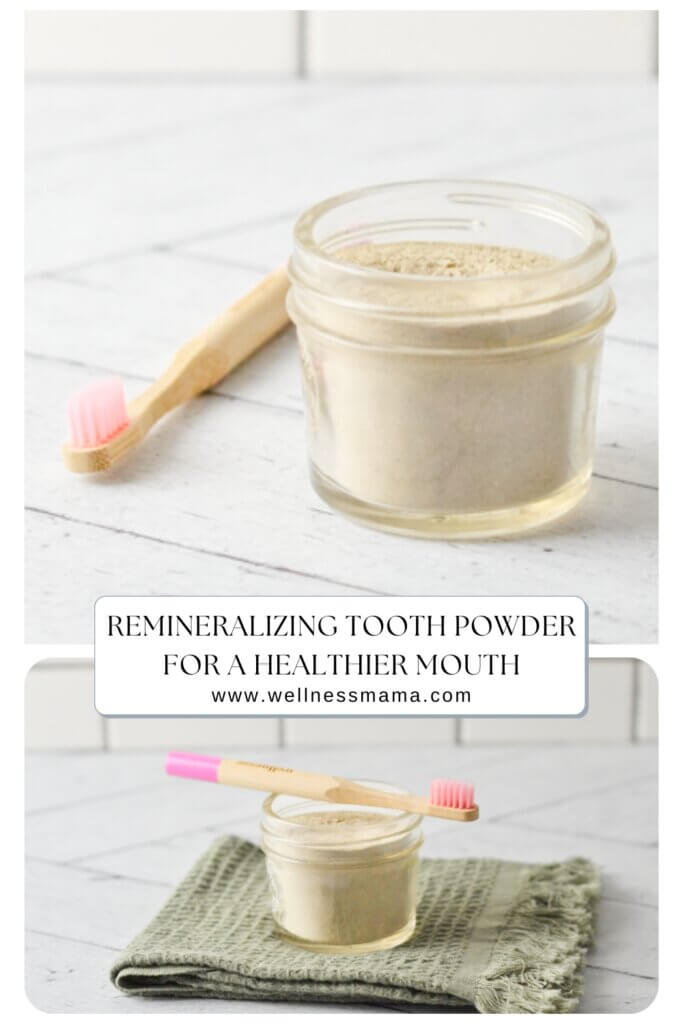

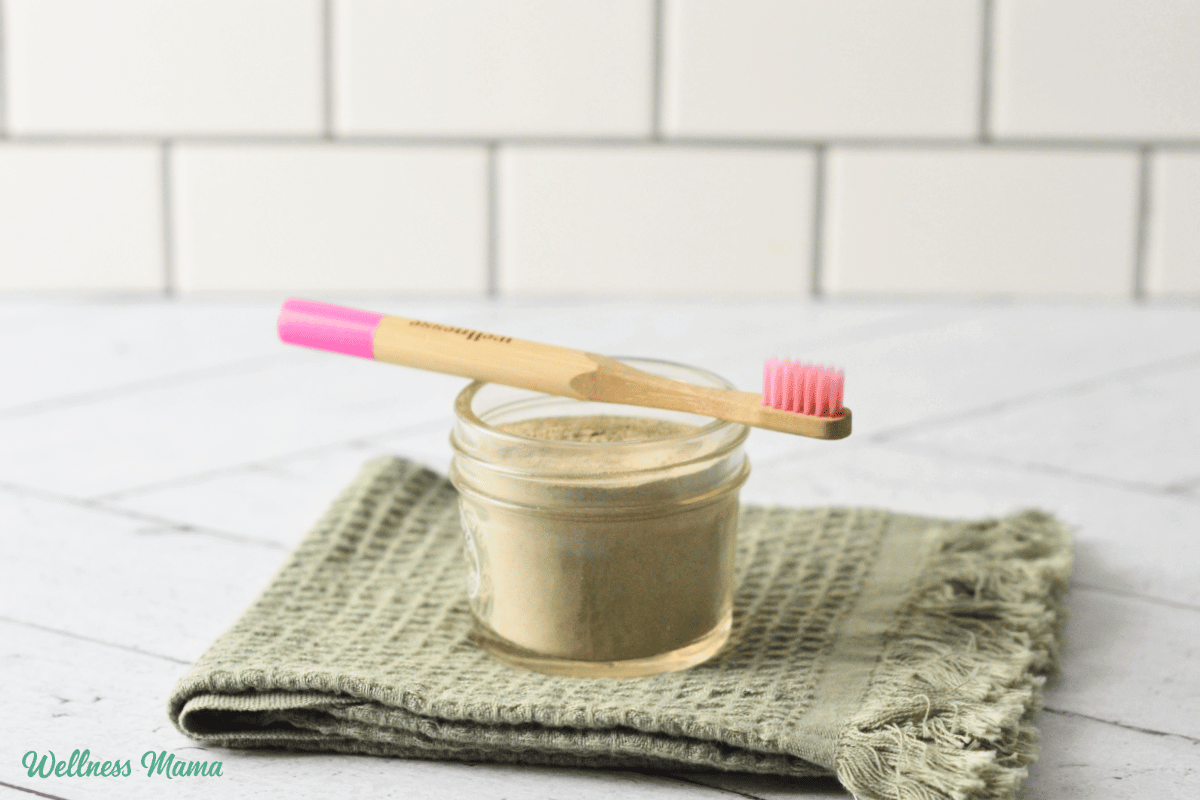
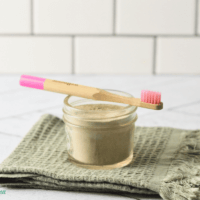
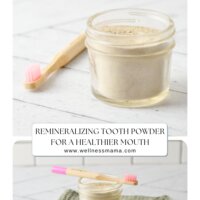
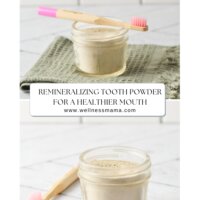
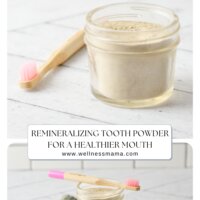
Leave a Reply